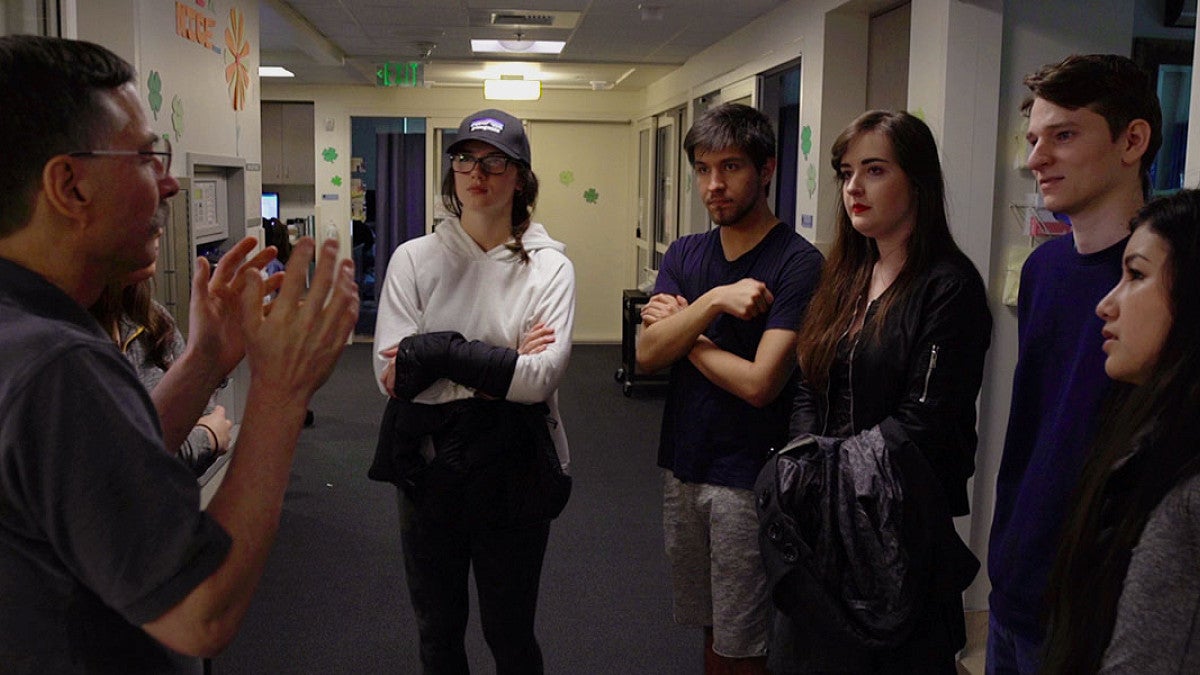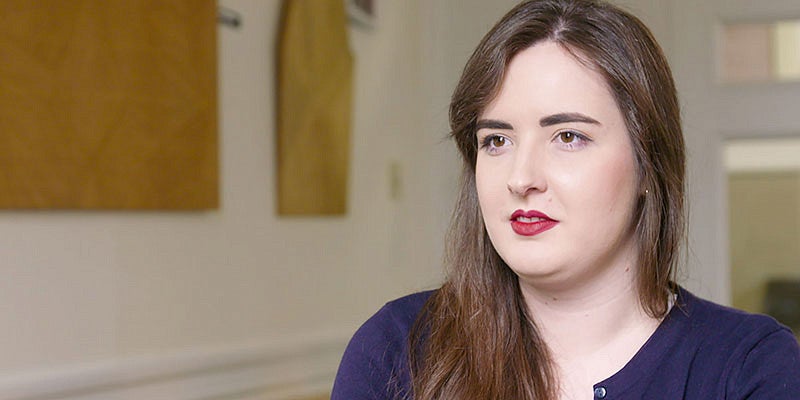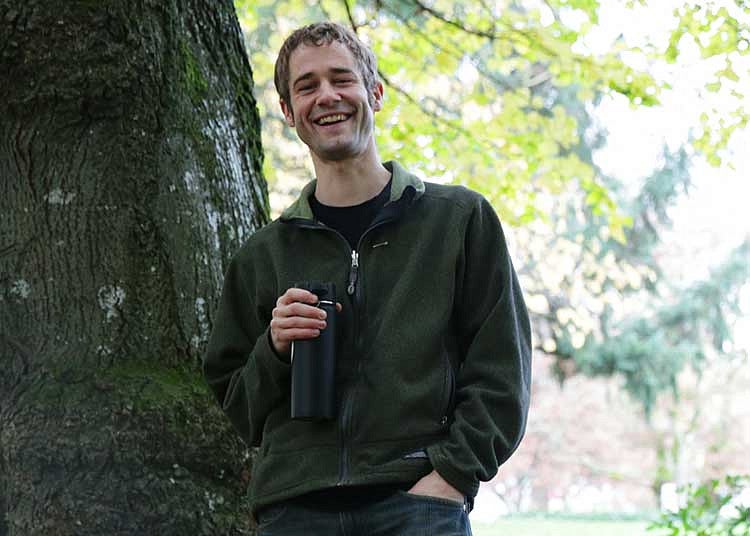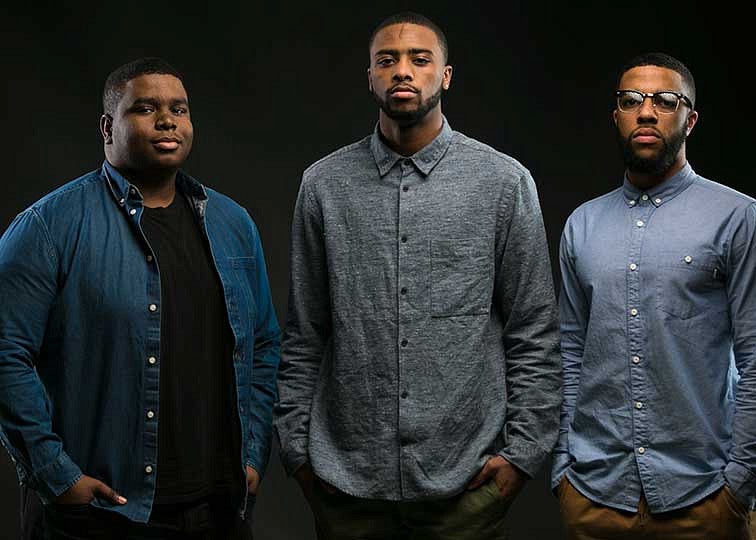The Morality of Medicine
Most philosophy students probably don’t expect to find themselves in a pair of medical scrubs, getting ready to step into an operating room — during class.
But that is exactly where UO philosophy student Aurora Laybourn-Candlish was on a Thursday afternoon of winter term, as she scrubbed into an organ harvesting procedure for her clinical ethics course — an experience she describes as one of the most profound learning opportunities of her academic career.
Aurora was part of a group of students who took the philosophy course clinical ethics to gain a better understanding of ethical questions that arise in a medical setting. These ethical questions include matters like informed consent, do-not-resuscitate orders, the role of surrogates, end-of-life care and human subject research.
UO philosopher Nicolae Morar, who designed and taught the course, believed the best way to help students comprehend these ethical concepts, was to enable them to see how these theoretical tools are applied in an actual medical setting.
Which is why Aurora was observing a surgical procedure at PeaceHealth Sacred Heart Medical Center at Riverbend, as she mulled over the relevant theoretical questions, like how to define death — something that might sound obvious, but has become increasingly complicated by advances in medical technology.
“That organ donation made us question all of the values and ideas that we had known before that,” she said.
Rationally, Aurora understood that a patient is declared legally and medically dead when their brain ceases to function, but as she watched a heart continue to beat with the help of a ventilator, she found herself challenging her own conceptions of life and death.
Aurora’s experience is exactly why Morar wanted to bridge the gap between theory and practice in this class.
“It is important to learn about value debates, but it is equally important to see how those value debates translate to real life situations,” Morar said.
Morar teamed up with PeaceHealth Sacred Heart Medical Center at Riverbend and its director of ethics John Holmes to provide students with an opportunity to consider the theoretical tools of clinical ethics in the real world. With support from the Oregon Humanities Center Wulf Teaching Professorship, Morar designed the course so that half was conducted on campus, where he would teach the philosophical portion of clinical ethics, and then students traveled to the hospital for the other half, where they learned about how professionals use these concepts and values to treat their patients.
Morar and Holmes recruited a group of healthcare practitioners to speak with students about how they address ethical challenges through their daily work. And to discuss theories that can seem straightforward in a classroom, but are much more complex in application.
“This model helped students realize the importance of theoretical tools, but also the limitations of these tools,” Morar explained.
Morar points to informed consent as a compelling example of how a fundamental concept of clinical ethics might be better understood through the lens of a medical practitioner. Informed consent, a patient’s legal right to understand and accept the risks and benefits of medical treatment, might seem straightforward on paper, but can be more challenging to implement under certain circumstances.
“Imagine an unconscious patient arrives with no medical record and the physician needs to administer urgent care? How does one apply informed consent in that scenario?” Morar said. “Informed consent can be easily complicated by a high-stress, high-uncertainty environment like an intensive care unit.”


Students learned about informed consent in a classroom in Susan Campbell Hall on Tuesday, and then met with a practicing emergency room physician at PeaceHealth to talk through this ethical question on Thursday.
“Informed consent seems like a no-brainer, but then you start talking to physicians and you realize how difficult it is to apply informed consent in so many clinical settings,” explained Andrew Pardi, another of the students who took clinical ethics. “The book always says one thing, like it’s set in stone, but then you go and meet actual physicians who have to operate under the systems we read about and you find that concepts kind of drift away. These overarching moral theories sound great on paper, but sometimes don’t work in a clinical setting.”
Andrew is a human physiology student who plans to attend medical school, but recently declared philosophy as a second major because classes like clinical ethics have helped him appreciate how philosophy enriches his education and will strengthen his ability to be a practicing physician.
“This class made me more passionate about my drive to practice medicine, it’s given me more skills, both morally and rationally, to combat difficult aspects of medicine.”
Morar wanted to enroll both human physiology and philosophy students in the course to reflect the interdisciplinary nature of clinical ethics and to help each group of students gain something from the others’ discipline.
“Humanists can see how powerful some of those conceptual tools are in real life, especially in very dramatic situations like a hospital,” Morar explained. “And human physiology students can benefit from the critical thinking that we develop in the humanities.”
Aurora was one of the philosophy students in clinical ethics and has no intention of attending medical school or becoming a physician like many of her human physiology counterparts, but the class helped her realize that a clinical setting could offer a venue for her to pursue a career that’s aligned with her academic passions.
“The fact that there are philosophers who work in hospitals, and people who ask these questions, and that there is a vibrant community of people having these conversations is really exciting and inspiring,” she said. “And it means that there is an application for the kinds of things I care about and that to me is amazing. And I don’t think I would have experienced that in a different kind of class.”
UO alum Laura Lyn Hosford found herself excited by a similar revelation when she studied philosophy at UO — before clinical ethics was offered. She began taking philosophy courses because she found the content intriguing. She didn’t know the field of clinical ethics existed, and certainly wasn’t pursuing a career in it — at least not yet.
When she discovered the field of clinical ethics through her studies, she was fascinated by the intersection between ethics and medicine, so she worked with Morar and Holmes to design her own internship at PeaceHealth. This internship provided her with a similar opportunity to the one clinical ethics afforded students during winter term — the chance to elevate her knowledge by observing the theoretical tools in action. The internship successfully grew her skills and interest in clinical ethics, and she’s now employed as a fulltime clinical ethicist at PeaceHealth.
“This is why I tell students to give their schedules the space to try out classes. You could end up on path you couldn’t have anticipated,” Hosford said.
Hosford spends her days helping patients, their families, and medical providers talk through the competing principles that exist in many medical situations, using the ethical depth acquired in philosophy classes for real clinical ethics situations in the hospital.
Hosford explains that she “works mostly in the gray area — where most of us live”.
“It’s more convenient to think about life in black and white, but that’s not reality.”
Morar hopes that this was a major takeaway for his students. Life — and medicine — can be unpredictable and complicated, but the conversations they had in clinical ethics can help students navigate the “grey area” — not just as philosophy scholars or ethicists or physicians, but simply as humans.
“These questions are long-term questions that any human being will probably have to answer in their lives,” Morar said.
“Humanities can help us think differently about some of the most important human experiences.”






